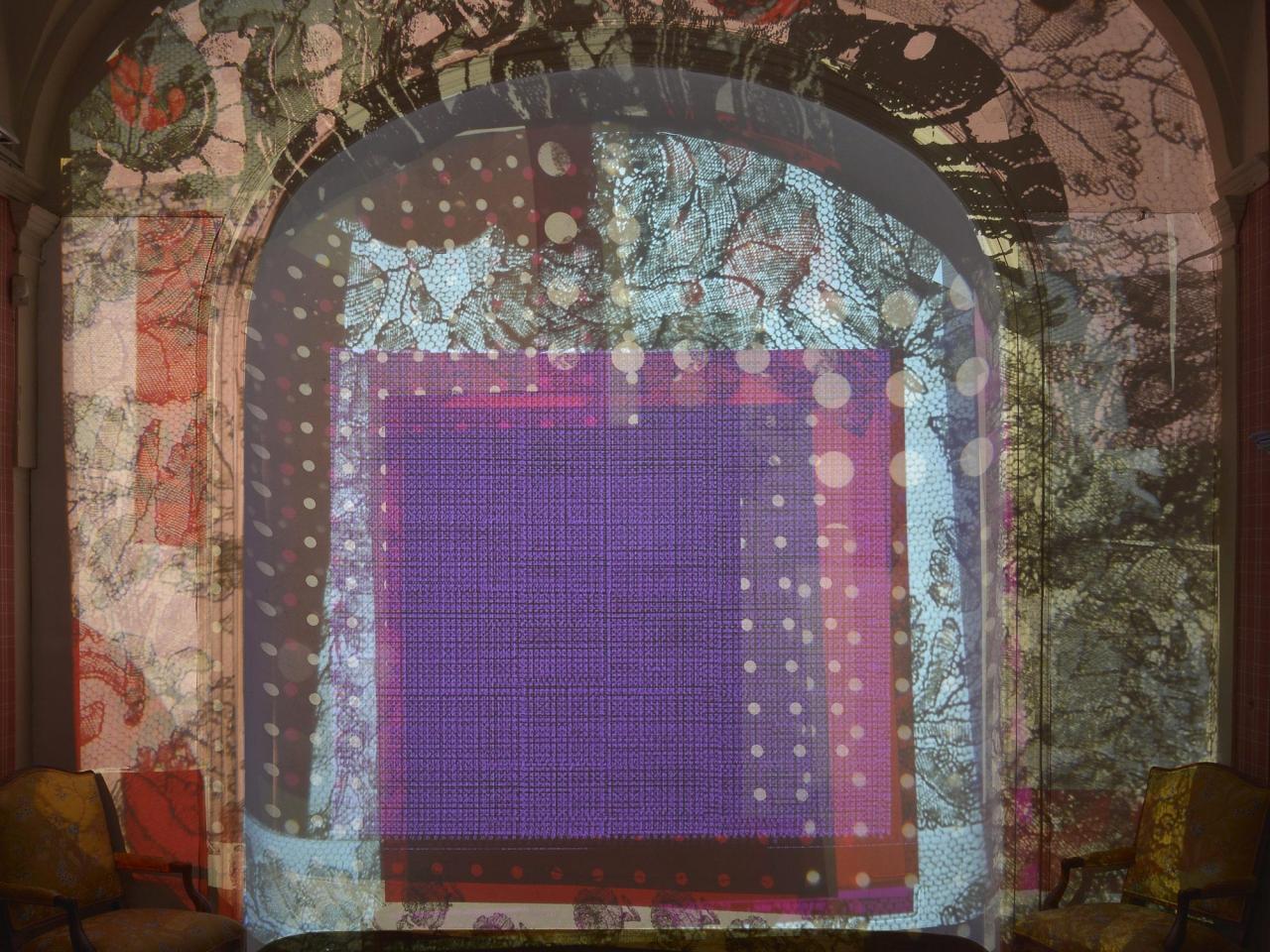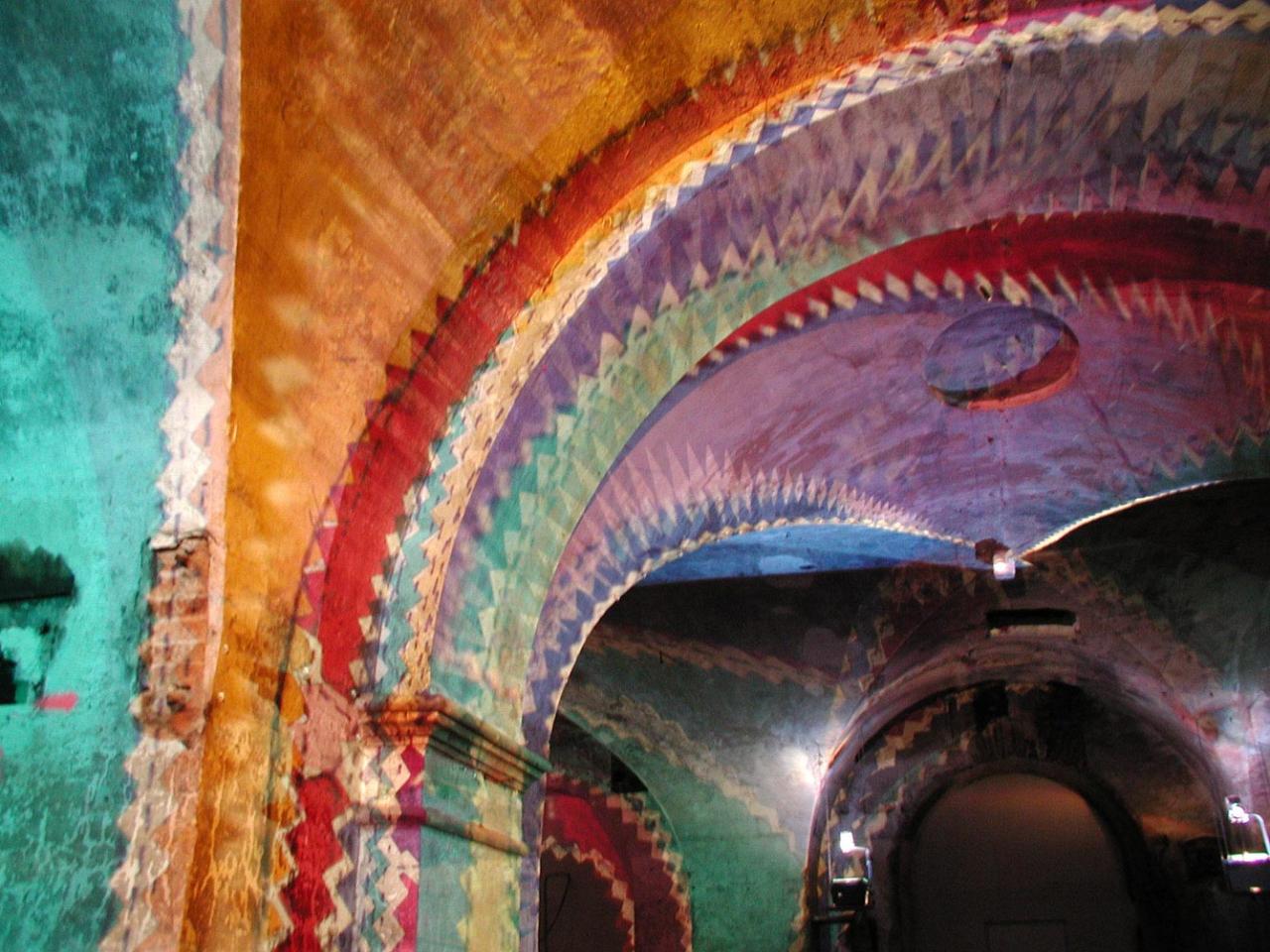Anne-Marie Pécheur
Born in 1950
Lives and works in Marseilles


To accompany her series of large vegetal figures on plexiglas, realized especially for her Aussillon exhibition in 1996, Anne-Marie Pécheur (who entertains complex relations with botany and writing) jots down a few particularly revealing lines: "I treated the place as an object to be ornamented, decorated, using it as the support, as if all were One, one sole space where flowers trace their shadows. Planted in front, hollowed, or cut, these develop in ordered ranks. They echo the windows, what is sky outside, what is blue inside. I looked after my plants for twenty days plotting their trails, filling in, seeding, cuttings, enormous flowers, in a gardening craze, irrigated by the intense energy coming from the light that circulates and oscillates between these walls". This text sounds like the introduction to a work dealing with the links between painting and gardening, or the art of hatching forms rather than hunting them down, inciting themto appear rather than brutally pinning them down on a canvas. To avoid this stumbling block, the support is often doubled with wood, glass, paper, plexiglas, obliging the perceptible forms to multiply, accept their duality, integrate their own reflection and the spectator's, to becom oblique.
Anne-Marie Pécheur paints floral motifs. She often chooses a vertical canvas, at times proportional to a sheet from a collection of plant illustrations, sometimes much narrower, in this top-stretched form common to a fan blade or a bookmark. She inscribes rigid, almost tome-like motifs, somewhere between anatomical corss-sections and botanical sketches. With a distinctive contour, she statufies the enlarged receptacle , ligule, stigmata, or all other recognizable organ reworked with a joyful animismwhich puts what the eye would have a hard time locating on the level of african or Oceanic statuary. Behind these scientific but equally primitive forms, the colorplane is drawn like a curtain, or like the velvet of a precious casket. The motif allows her to arrive at a stage where the pictorial can allow itself to borrow techniques from all the other arts. Anne-Marie Pécheur will affirm that she continues to make paintings and undoubtedly, no one will believe her.
Anne-Marie Pécheur doesn't paint recognizable motifs, floral or other.While the vertical formats lead one to think that she lays out an image as if on a page, she concerns herself most with its color and the backgrounds she applies one after another, with the precision of a medieval image-maker, an illuminator. It matters little to her if the work can be identified with the observable. What goes on here has to dowith colors, materials, layers, and strokes. And composition rhythms as well. One has the impression of seeing a concave object, but it'sonly an expanse of an off-tint to mark something like an absence. One thinks one has discovered a relief, but it'sonly different colors that combine to avoid the boredom of the uniform tint. All the tricks, references and connotations lead inevitably back to painting. In order for there not to be an image and for pictoriality alone to exist. Anne-Marie Pécheur will say that she never stopped making paintings, and of course, no one will not be able to not believe her.
François Bazzoli, taken from Dérives Botaniques, Artgo editions, Bruxelles, 1998